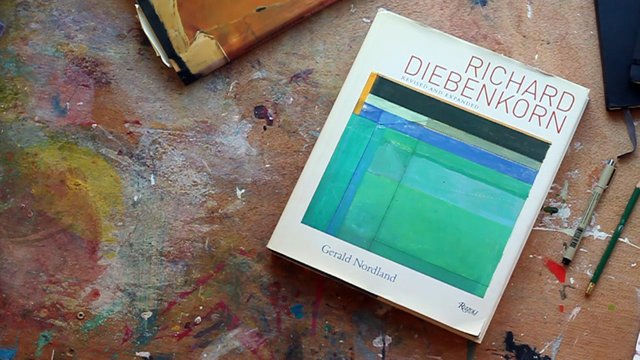WHY I STEAL LIKE A THEIF
Why I Steal Like A Thief And You Should Too

"What has been will be again, what has been done will be done again; there is nothing new under the sun."
- Ecclesiastes 1:9
I steal like a thief. In fact, I've been doing it for years. I used to feel kind of bad about it, but I'm over it now. Why? Because it has helped me grow. And, come to find out, I am in good company.
I worked in Juvenile Justice Center (detention) so admitting to thievery is a bit contradictory. However, the kind of stealing I'm talking about is not illegal. As long as you manipulate what you stole into something all your own.
For a case in point, I give you Richard Diebenkorn:

Masters across the decades
The Wall Street Journal (WSJ) recently ran an excellent article, "Masters Across the Decades," about the painters Richard Diebenkorn and Henri Matisse.
Diebenkorn idolized the work of Henri Matisse. In 1943, when Diebenkorn was an art student at Stanford, he came across his first Matisse painting. From then on, Diebenkorn sought out Matisse's work. He was deeply affected and influenced by it.
As the article states:
"Again and again, Diebenkorn (1922-1993) would create drawings and paintings whose structure, palette, light, fluidity and sense of place profoundly embraced Matisse."
There's nothing wrong with idolizing another artist. There are many painters and writers who channel the work of their heroes.
Diebenkorn borrowed liberally from Matisse's palette, designs, etc. But, as the WSJ article notes:
"Always, though, 'he was able to make them new,' as scholar John Elderfield writes in the catalog for Matisse/Diebenkorn, a stunningly beautiful display here at the San Francisco Museum of Modern Art."
The San Francisco Museum of Modern Art exhibition intersperses 40 paintings and drawings by Matisse with 60 by Diebenkorn. The influence of Matisse on Diebenkorn is undeniable, yet Diebenkorn evolved in his own right.
Diebenkorn moved from abstraction to lush streetscapes, still lifes, figurative work and then back to abstraction. The
WSJ article adds:
"Diebenkorn had changed dramatically. No longer making the energy-filled abstractions of his youth, or the sumptuous figurative works of his middle years, he had evolved into a painter of quiet, peaceful, thoughtful works."
Other artists, like Cezanne, Mondrian, Bonnard and Hopper all influenced Diebenkorn. Of course, Matisse was Diebenkorn's loadstar. He may have stolen from them all, but he transcended them and emerged as the artist we celebrate today.
Steal like an artist
New York Times best selling writer Austin Kleon describes himself this way: "I'm a writer who draws. I make art with words and books with pictures."
Awhile back I picked up Kleon's popular book, "Steal Like an Artist: 10 Things Nobody Told You About Being Creative." The little book is packed with all sorts of helpful insights.
For example:
"We learn by copying. We're talking about practice here, not plagiarism-plagiarism is trying to pass someone else's work off as your own. Copying is about reverse engineering... Remember: Even The Beatles started as a cover band."
When I was a teenager I used to copy the paintings of fantasy artist Frank Frazetta. I loved the way he exaggerated anatomy and connected shapes in his work. By aping his style, I learned a lot about design and color.
With my cartooning I leaned heavily upon the work of Jeff MacNelly, a three time Pulitzer prize winner for editorial cartoons. I loved his lush detail and superb crosshatching. My cartoons today still bear his influence, but I'm beginning see more of my voice now.
Artwork is a lot like cursive handwriting (are schools teaching it anymore?). Students are taught the same shapes, loops, etc. But over time everyone develops their own unique hand. So it is with art.
The key is to keep making art. You need to do a lot of it in order to allow your own, authentic expression to emerge. As Austin Kleon says, "Don't wait until you know who you are to get started."
See like your heroes
Stealing (maybe "borrowing" is a softer term) from other artists helps us learn how they solved problems. It's why so so many art students go to museums and copy the masters. It also helps us build technical skills necessary to (eventually) free our own, unique voices.
Austin Kleon put it this way:
"You are the sum of your influences... Your job is to collect good ideas. The more good ideas you collect, the more you can choose from to be influenced by... Seeing yourself as part of a creative lineage will help you feel less alone as you start making your own stuff... You don't want to look like your heroes, you want to see like your heroes... That's what you really want-to internalize their way of looking at the world... It is the act of making things and doing our work that we figure out who we are."
Kleon encourages us to "be curious about the world in which you live... Always be reading.... Don't worry about doing research. Just search." I think that's pretty good advice. The not-so-secret formula for becoming known.
In Kleon's best selling followup book, "Show Your Work! 10 Ways to Share Your Creativity and Get Discovered," he advises us:
"If there was a secret formula for becoming known, I would give it to you. But there's only one not-so-secret formula that I know: Do good work and share it with people. It's a two-step process... Not everyone will get it... So get comfortable with being misunderstood, disparaged, or ignored-the trick is to be too busy doing your work to care."
One of the benefits of being an unknown artist, according to Kleon, is that you can, "enjoy your obscurity while it lasts... There's no pressure when you're unknown. You can do what you want. Experiment. Do things just for the fun of it. When you're unknown, there's nothing to distract your from getting better."
Best selling author Jeff Goins put it this way: "Creativity is not about coming up with something new and original. It is about borrowing ideas from a variety of sources and re-assembling them into a better or at least different package."
You don't have the right to remain silent.
There may be nothing new under the sun, but we are still inspired by every beautiful sunrise and sunset.
Henri Matisse was the wind beneath Richard Diebenkorn's wings, yet Diebenkorn managed to chart his own flight path.
The Pulitzer Prize winning cartoonist Jeff MacNelly influenced a generation of cartoonists with his sketchy style. Yet he himself was influenced by the animator and comic strip artist Walt Kelly (who drew "Pogo") as well as the editorial cartoonist Pat Oliphant.
Fantasy artist Frank Frazetta was so influenced by the comic artist Hal Foster (who drew the Prince Valiant comic strip) that he even mimicked Foster's signature. Yet Frazetta, just like Richard Diebenkorn and Jeff MacNelly, found his own way and succeeded.
It's okay to steal like a thief. Copy the masters and your heroes. Heck, even the great John Singer Sargent copied the works of other masters. But there's one caveat, and it is this: You don't have the right to remain silent.
If you steal from other artists, you must acknowledge it. Give them credit. In this way, you honor your influences.
Finally, you can't stop when your work resembles the ones you admire. You have to keep pushing and digging deeper. Sooner or later, your own beautiful sunrises and sunsets will emerge.
#Creativity, #Artist, #Painting, #Art, #Techniques #JacksonPollock, #Abstract, #Modern
As a side note: I have had artwork (abstract paintings and paintings I do of dogs) mine copied and for awhile stopped posting it online. Then I decided that it was an honor to be copied. So go ahead, rekindle, or use new techniques for creation. Blissful creating for all! -Darcy K. Butcher, Artist